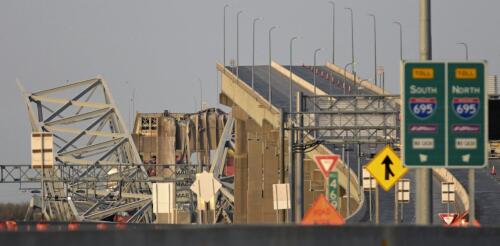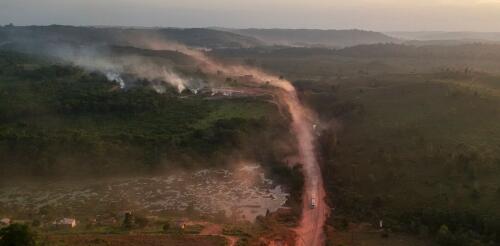Roads
A container ship rammed into the Francis Scott Key Bridge in Baltimore around 1:30 a.m. on March 26, 2024, causing a portion of the bridge to collapse into Baltimore Harbor. Officials called the event a mass casualty and were searching for people in the waters of the busy port. This event occurred less than a year after a portion of Interstate 95 collapsed in north Philadelphia during a truck fire. That disaster was initially expected to snarl traffic for months, but a temporary six-lane roadway was constructed in 12 days to serve motorists while a permanent overpass was rebuilt. U.S. cities often face similar challenges when routine wear and tear, natural disasters or major accidents damage roads and bridges. Transportation engineer Lee D. Han explains how planners, transit agencies and city governments anticipate and manage these disruptions. How do agencies plan for disruptions like this? Planning is a central mission for state and metropolitan transportation agencies. T...
Spring is planting time for home gardeners, landscapers and public works agencies across the U.S. And there’s rising demand for native plants – species that are genetically adapted to the specific regions where they are used. Native plants have evolved with local climates and soil conditions. As a result, they generally require less maintenance, such as watering and fertilizing, after they become established, and they are hardier than non-native species. Many federal, state and city agencies rank native plants as a first choice for restoring areas that have been disturbed by natural disasters or human activities like mining and development. Repairing damaged landscapes is a critical strategy for slowing climate change and species loss. But there’s one big problem: There aren’t enough native seeds. This issue is so serious that it was the subject of a recent report from the National Academies of Sciences, Engineering and Medicine. The study found an u...
Conservationists breathed a sigh of relief when Luiz Inácio Lula da Silva won Brazil’s presidential election in the fall of 2022. His predecessor, Jair Bolsonaro, had opened large parts of the Amazon region to business by crippling enforcement of environmental laws and turning a blind eye to land grabbing. It should come as no surprise that deforestation showed a sharp uptick. However, while Lula oversaw a more than 70% drop in deforestation during his first run as president in the early 2000s, the rainforest’s future remains deeply uncertain. That’s in part because Brazilian administrations, whether of the right or left, have all promoted an ambitious project to boost exports and the economy called the Initiative for the Integration of the Regional Infrastructure of South America, or IIRSA. The initiative focuses on new roads, dams and industry that can threaten the region’s fragile rainforest ecosystem – and harm the world’s climate i...
Forests are critically important for slowing climate change. They remove huge quantities of carbon dioxide from the atmosphere – 30% of all fossil fuel emissions annually – and store carbon in trees and soils. Old and mature forests are especially important: They handle droughts, storms and wildfires better than young trees, and they store more carbon. In a 2022 executive order, President Joe Biden called for conserving mature and old-growth forests on federal lands. Recently Biden protected nearly half of the Tongass National Forest in Alaska from road-building and logging. The Biden administration is compiling an inventory of mature and old-growth forests on public lands that will support further conservation actions. But at the same time, federal agencies are initiating and implementing numerous logging projects in mature and old forests without accounting for how these projects will affect climate change or forest species. As scientists who have spent decades...



